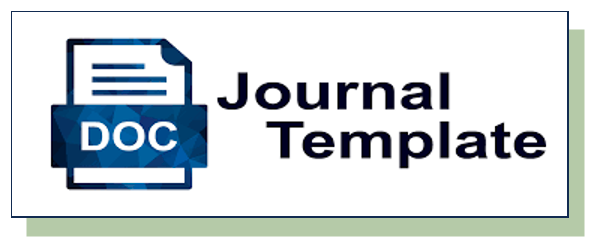Analisis Kesulitan Belajar Pendidikan Agama Islam (PAI) Serta Cara Mengatasinya
DOI:
https://doi.org/10.29240/belajea.v5i1.1145Keywords:
kesulitan belajar, Pendidikan Agama Islam, cara mengatasinyaAbstract
Difficulty of student learning is an obstacle experienced by students in their efforts to learn the subjects they learn in school, or things that can lead to failure of learning progress. Teachers play an important role in terms of helping students overcome learning difficulties, improving student achievement and learning outcomes, as a teacher's teaching reference so that it is better to be material for students in facing and overcoming student learning difficulties, and for schools contributing important information that is good for schools in order improvement of the teaching and learning process of Islamic Religious Education. How to overcome the results of this article are obtained that the results show that: (1) Choosing the PAI learning method appropriately, so students do not get bored and bored with PAI subjects, especially reading and memorizing the Qur'an. (2) The use of varied media both originates from print media, electronics and so on to support the learning process. (3) Always provide motivation to students after completing learning activities and strengthen the spirit in their souls so that the student is happy with the teacher and his brain becomes easy to accept the lesson.
Â
Downloads
References
An-Nahlawi, Abdurrahman, 1989. Ushulut Tarbiyatil Ilmiyah wa Asalibuha, Ter. Hery Noer Aly. Bandung: CV. Diponegoro,
Abudin Nata. 2009. Perspektif Islam tentang Strategi Pembelajaran. Jakarta: Kencana.
Chan, Faizal., Pamela, I.S., Sinaga. I.S., Mesariani, Oktarina,R & Julianti.M. 2019. Strategi Guru Dalam Mengatasi Kesulitan Belajar Di Sekolah Dasar. AULADUNA: Jurnal Pendidikan Dasar Islam. 6.
Ghufron, M.N & Rini Risnawati. 2015. Kesulitan Belajar Pada Anak: identifitasi Faktor yang Berperan. Jurnal Elementary. 3.
Ismail. 2016. Diagnosis Kesulitan Belajar Siswa dalam Pembelajaran Aktif di Sekolah. Jurnal Edukasi. 2.
Ixganda & Suwahyo. 2015. Analisis Deskriptif Faktor Penyebab Kesulitan Belajar Pada Mata Pelajaran Chassis Dan Pemindah Daya Siswa Kelas Xi Program Keahlian Teknik Kendaraan Ringan. Jurnal Pendidikan Teknik Mesin. 15.
Jihad, Salimul & Suaeb, M. 2017. Strategi guru dalam mengatasi kesulitan belajar siswa dalam pelajaran mufrodat kelas VI MI NW Dasan Agung Mataram Tahun Pelajaran 2016/2017. el-Tsaqâfah. 17.
Munirah. 2018. Peranan Guru dalam Mengatasi Kesulitan Belajar Siswa. Tarbawi: Jurnal Pendidikan Agama Ilsam. 3.
Muntari. 2015. Upaya Guru Mengatasi Kesulitan Belajar Siswa Bidang Studi Pendidikan Agama Islam Di SD Mujahidin 2 Surabaya . Tarus: Jurnal Pendidikan Islam. 4 .
Mulyadi. 2010. Diagnosis Kesulitan Belajar & Bimbingan Terhadap Kesulitan Belajar Khusus. Yogyakarta: Nuha Litera.
Pane, Aprida. 2017. Belajar dan Pembelajaran. Jurnal Kajian Ilmu-Ilmu Keislaman. 3.
Ramayulis. 2001. Metodologi Pengajaran Agama Islam, Jakarta: Radar Jaya Offset,
Rooljakers, A.D. 1989. Mengajar dengan Sukses, Jakarta: Gramedia
Slameto. 2013. Belajar dan FaktorFaktor Yang Mempengaruhinya. Rineka Cipta: Jakarta.
Subini, N. 2011. Mengatasi Kesulitan Belajar Pada Anak. Perpustakaan. Nasional: Jakarta
Sudarwan Danim. 2010. Perkembangan Peserta Didik. Bandung: Alfabeta
Susanti, R. D. 2018. Strategi Guru Kelas Dalam Mengatasi Kesulitan Belajar Akademik Siswa Dalam Pembelajaran Di Sekolah Dasar. KONSELING EDUKASI Journal of Guidance and Counseling, 2.
Suryani, Yulinda Erma. 2010. Kesulitan Belajar. Jurnal Penelitian Magistra. Magistra Th. XXII. No. 73.
Warkitri, dkk. 1998. Penilaian Pencapaian Hasil Belajar. Jakarta: Universitas Terbuka.
Downloads
Published
How to Cite
Issue
Section
Citation Check
License
Authors who publish with Belajea: Jurnal Pendidikan Islam agree to the following terms:- Authors retain copyright and grant the journal right of first publication with the work simultaneously licensed under a Creative Commons Attribution-NonCommercial-ShareAlike 4.0 International License (CC BY-NC-SA 4.0) that allows others to share the work with an acknowledgment of the work's authorship and initial publication in this journal.
- Authors are able to enter into separate, additional contractual arrangements for the non-exclusive distribution of the journal's published version of the work (e.g., post it to an institutional repository or publish it in a book), with an acknowledgment of its initial publication in this journal.
- Authors are permitted and encouraged to post their work online (e.g., in institutional repositories or on their website) prior to and during the submission process, as it can lead to productive exchanges, as well as earlier and greater citation of published work (See The Effect of Open Access).





 This work is licensed under a
This work is licensed under a 